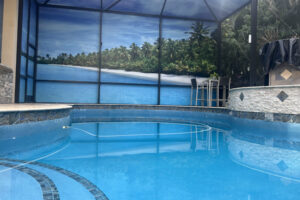Understanding Algae and Its Growth
What is algae, and why does it grow in pools?
Algae are single-celled organisms that can thrive in various aquatic environments, including swimming pools. Photosynthetic organisms require sunlight, water, and nutrients to grow. Algae spores can enter your pool through wind, rain, or contaminated equipment. Once inside the pool, they can multiply and form visible colonies, leading to the unsightly green, brown, or even black discoloration of the water and pool surfaces.
Types of algae commonly found in pools
Several types of algae can be found in swimming pools, including green algae, mustard or yellow algae, and black or blue-green algae. Green algae are the most common and can give your pool a greenish appearance. Mustard algae are usually yellowish-green and can be difficult to remove. Black or blue-green algae are the most stubborn and can form dark, slimy spots on pool surfaces.
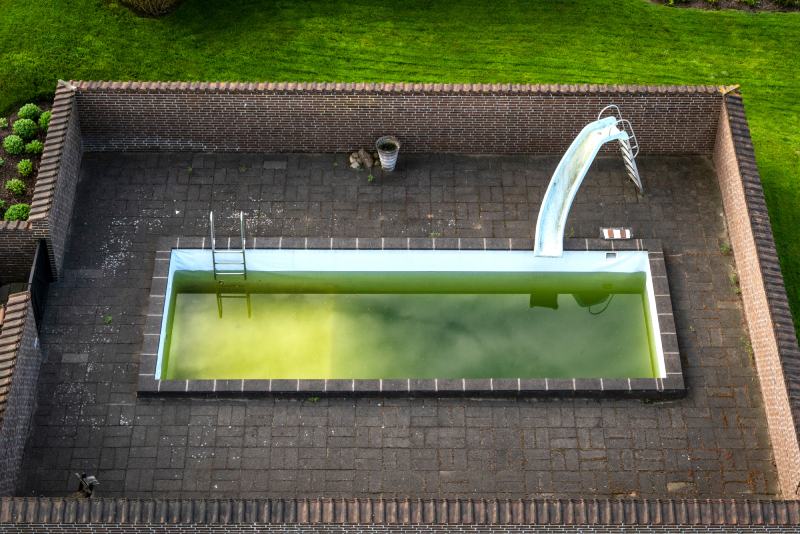
Factors contributing to algae growth in pools
Algae growth in pools can be attributed to various factors, including:
- Insufficient circulation and filtration: Inadequate circulation and filtration can create stagnant areas in the pool where algae can thrive.
- Imbalanced water chemistry: Poorly balanced pool water with improper pH, alkalinity, or sanitizer levels can create an environment conducive to algae growth.
- Lack of maintenance: Inconsistent or inadequate pool maintenance, including infrequent brushing, vacuuming, and cleaning of pool surfaces and equipment, can contribute to algae growth.
- Presence of organic matter: Leaves, debris, and other organic matter accumulation in the pool provide nutrients for algae growth. Removing debris and maintaining a clean pool environment is essential to prevent algae growth.
Preventing Algae Growth Naturally
What prevents algae from growing in pools?
Taking proactive measures to prevent algae growth can help maintain a clean and clear pool. Here are some natural methods to prevent algae in your pool:
- Proper circulation and filtration: Ensure your pool’s circulation and filtration systems function optimally. Good water circulation helps distribute sanitizers evenly and prevents stagnant areas where algae can thrive.
- Regular brushing and cleaning: Regularly brush the pool walls, floors, and other surfaces to remove algae spores or biofilm buildup. Vacuum the pool to remove debris and sediments contributing to algae growth.
- Maintain proper water chemistry: Regularly test and balance your pool water chemistry. Maintain appropriate pH, alkalinity, and sanitizer levels to create an unfavorable environment for algae growth. Consider using algaecides or natural enzymes to supplement your regular pool maintenance routine.
- Sunlight and shade: Algae thrive in the presence of sunlight. Utilize pool covers or create shade structures to limit the amount of direct sunlight reaching your pool. This can help reduce the conditions conducive to algae growth.
- Proper pool hygiene: Encourage swimmers to practice good hygiene before entering the pool, such as showering to remove oils, lotions, and sweat. This helps minimize the introduction of organic matter that can contribute to algae growth.
Natural remedies for preventing algae in your pool
There are several natural remedies you can try to prevent algae growth in your pool:
- Borates: Adding borates to your pool water can help inhibit algae growth. Borates are an additional buffer to stabilize pH levels and provide long-lasting algae prevention.
- Vitamin C: Using vitamin C tablets or ascorbic acid can help eliminate metal stains that can act as a food source for algae.
- Pool cover: Using a pool cover when the pool is not in use helps reduce the amount of debris and sunlight exposure, thereby minimizing the conditions favorable for algae growth.
- Poolside plants: Planting certain aquatic plants around your pool can provide natural shade and absorb excess nutrients, reducing the chances of algae growth.

Utilizing filtration systems for algae prevention
An efficient filtration system plays a crucial role in preventing algae growth. Here’s how you can utilize filtration systems effectively:
- Regular maintenance: Clean or backwash your filter regularly to remove debris and trapped particles. This ensures proper filtration and prevents clogging, which can lead to poor circulation and algae growth.
- Upgrade your filter: Consider upgrading your filtration system to a more advanced model, such as a sand, cartridge, or diatomaceous earth (DE) filter. These filters are designed to capture smaller particles and provide better water clarity.
- Run the filter for an adequate duration: It’s essential to run the filtration system for a sufficient amount each day. The recommended filtration duration varies based on pool size, bather load, and environmental conditions. Consult with a pool professional to determine the optimal filtration time for your pool.
The role of plants in preventing and treating algae
Certain aquatic plants can assist in preventing and treating algae growth in your pool. These plants act as natural competitors for nutrients and shade providers, reducing the conditions favorable for algae. Some popular poolside plants include water lilies, hyacinths, and lettuce. However, it’s important to note that not all plants are suitable for pool environments, so consult a local nursery or pool professional to determine the best plant options for your pool.
Controlling excessive nutrients to inhibit algae growth
Excessive nutrients in pool water can fuel algae growth. Here are some measures to control nutrient levels and inhibit algae growth:
- Regular cleaning: Remove leaves, debris, and other organic matter from the pool regularly. Skim the surface, clean the skimmer baskets, and use a pool vacuum to remove any debris settled at the bottom.
- Proper water circulation: Ensure proper circulation to prevent stagnant areas where nutrients can accumulate. Adjust your pool jets and return lines to promote efficient circulation throughout the pool.
- Avoid overfeeding: If you have a poolside feeding area for pets or wildlife, avoid overfeeding to prevent excess nutrients from entering the pool.
- Balance chemical levels: Maintain proper pool water chemistry, including pH, alkalinity, and sanitizer levels, to prevent imbalances that can contribute to nutrient buildup and algae growth.
- Use phosphate removers: Phosphates are nutrients that can fuel algae growth. Consider using phosphate removers to keep phosphate levels in check and inhibit algae development.
Effective Algae Removal Techniques
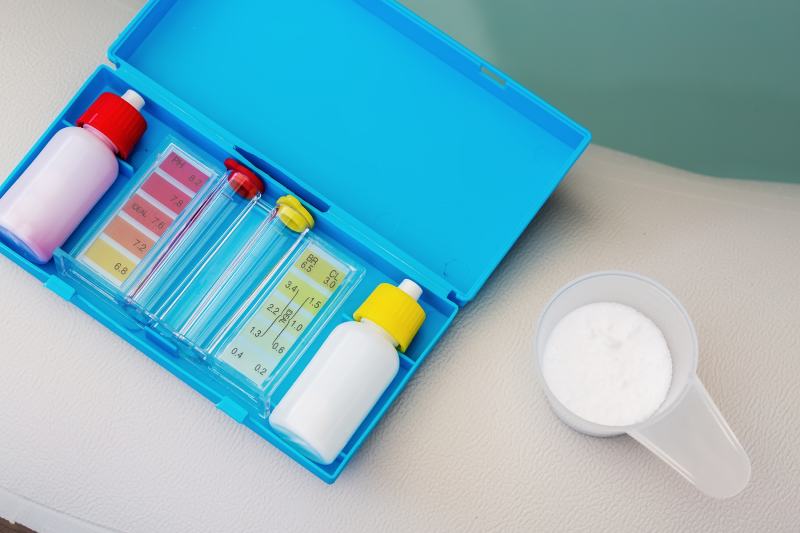
Killing algae in your pool: Immediate action steps
If you notice algae growth in your pool, it’s important to immediately prevent it from spreading further. Our Acid Wash service, will make this prevention and steps much easier. Follow these steps to kill algae in your pool:
- Brushing and vacuuming: Start by vigorously brushing the affected areas, including pool walls, steps, and other surfaces, to break up the algae colonies. Use a pool vacuum to remove the loosened algae and debris.
- Shock treatment: Shocking the pool involves adding a high dose of chlorine or a non-chlorine oxidizer to eliminate algae and other organic contaminants. Follow the manufacturer’s instructions and recommended dosage for your specific pool.
- Algaecide treatment: Consider using an algaecide specifically formulated to kill and prevent algae growth. Choose a product suitable for your pool type and follow the instructions for application.
- Filtration and circulation: Run your pool’s filtration system continuously during and after treatment to remove dead algae particles and prevent their re-entry into the pool water.
- Retest and balance water chemistry: After algae treatment, retest and balance your pool water chemistry to ensure proper sanitization and prevent future algae outbreaks.
Chemical treatments for algae removal
Chemical treatments can be effective in removing algae from your pool. Common chemicals used for algae removal include chlorine, algaecides, and oxidizers. Follow these guidelines when using chemical treatments:
- Chlorine treatment: Shocking the pool with chlorine is a common way to kill algae. Choose a chlorine shock product with a high concentration of available chlorine and follow the manufacturer’s instructions for dosage and application.
- Algaecide treatment: Algaecides are specifically designed to control and prevent algae growth. Select an algaecide suitable for your pool type and algae species. Follow the instructions carefully for proper application and dosage.
- Non-chlorine oxidizers: Non-chlorine oxidizers, such as potassium monopersulfate or hydrogen peroxide-based products, can also remove algae and other organic contaminants. These oxidizers break down organic matter and help restore water clarity.
- Follow safety precautions: When using any chemical treatment, always follow the manufacturer’s instructions, wear appropriate protective equipment, and keep the pool area well-ventilated.
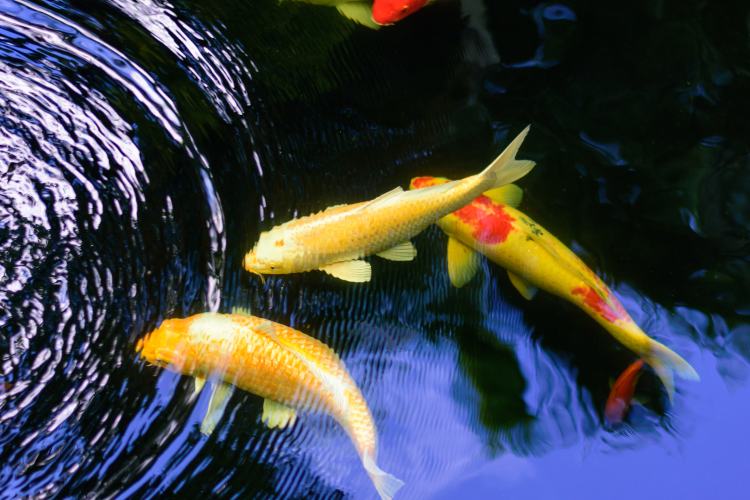
Algae control without harming plants and fish
If your pool contains plants and fish, it’s important to choose algae control methods that are safe for them. Here are algae control methods that are safe for both plants and fish in your pool:
- Natural enzymes: Consider using natural enzyme-based products to break down organic matter, including algae, without harming plants and fish. These enzymes help improve water clarity and reduce the risk of algae growth.
- Barley straw: Barley straw is a natural and chemical-free method to control algae. As the straw decomposes, it releases compounds that inhibit algae growth. Place barley straw in a mesh bag, float it in the pool or use a specialized barley straw product.
- Beneficial bacteria: Introduce beneficial bacteria products specifically formulated for pools. These bacteria consume excess nutrients, including those that promote algae growth, helping to maintain water quality and prevent algae blooms.
- Manual removal: If algae growth is limited to specific areas, manually remove the algae using a pool brush or net. Be gentle to avoid damaging plants and fish while effectively removing the algae.
- Maintain proper water balance: Keeping your pool water properly balanced is crucial for the health of both plants and fish. Regularly monitor and adjust pH, alkalinity, and other chemical levels to prevent imbalances that can harm aquatic life while promoting algae growth.
Using barley straw for algae prevention and treatment
Barley straw is an effective natural method for algae prevention and treatment in pools. The straw releases certain compounds as it decomposes, inhibiting algae growth. Here’s how to use barley straw in your pool:
- Purchase barley straw: Look for high-quality barley straw designed for pool use. Avoid using straw meant for animal bedding or other purposes, as it may contain additives that can harm your pool.
- Place barley straw in a mesh bag: Place a small amount in a mesh bag or nylon stocking. This helps contain the straw and prevents it from spreading throughout the pool.
- Float the bag in the pool: Place the barley straw bag in an area of the pool with good water circulation. You can use a pool skimmer or attach the bag to a pool float to keep it afloat.
- Monitor and replace the straw: Check the barley straw regularly to ensure it is still intact and decomposing. Replace the straw every few months or as the manufacturer recommends for continued algae prevention.
Managing water quality to combat algae blooms
Maintaining good water quality is essential for preventing algae blooms in your pool. Here are some tips for managing water quality:
- Test the water regularly: Use a reliable pool water testing kit to monitor the chemical levels, including pH, alkalinity, and sanitizer levels. Regular testing helps identify imbalances that can promote algae growth.
- Balance water chemistry: Adjust the chemical levels to maintain proper water balance. Keep the pH between 7.2 and 7.6 and alkalinity between 80 and 120 ppm (parts per million). Follow the recommendations provided by the testing kit or consult a pool professional for guidance.
- Regularly clean and maintain the pool: Skim the surface, vacuum the pool, and clean the pool walls and surfaces regularly to remove debris and prevent nutrient buildup. Brushing the pool helps disrupt algae growth and makes it easier to remove.
- Optimize filtration and circulation: Ensure your pool’s filtration and circulation systems function effectively. Clean or backwash the filter regularly to remove debris and improve filtration. Adjust the pool jets and return lines to promote proper water circulation and prevent stagnant areas.
- Shock the pool when necessary: Periodically shock the pool with a chlorine-based shock treatment to kill any potential algae spores and maintain water clarity. Follow the manufacturer’s instructions for dosage and application.
By following these steps and implementing preventive measures, you can effectively manage algae growth in your pool and enjoy a clean and clear swimming environment.
Expert Tips and Preventative Measures
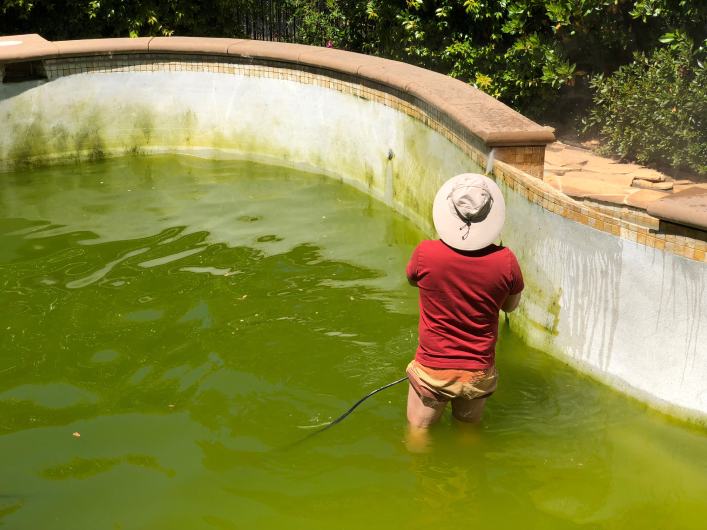
Preventing algae growth through regular pool maintenance
Regular pool maintenance is key to preventing algae growth. Here are some tips to incorporate into your maintenance routine:
- Skim the pool: Daily, use a skimmer net to remove leaves, debris, and other floating matter from the pool’s surface. This prevents organic material from decomposing and becoming nutrients for algae.
- Brush and vacuum: Brush the pool walls, floor, and steps at least once a week to dislodge algae or biofilm buildup. Follow up with vacuuming to remove the loosened debris.
- Clean filters: Regularly clean or backwash your pool filters to ensure optimal filtration. This helps remove small particles and prevents algae from recirculating in the water.
- Monitor water chemistry: Regularly test your pool water to maintain proper pH, alkalinity, and sanitizer levels. Imbalanced water chemistry can promote algae growth, so make adjustments to keep the water balanced.
- Shock treatment: Periodically shock the pool using a chlorine-based shock treatment to kill any remaining algae spores and maintain water clarity. Follow the manufacturer’s instructions for dosage and application.
The role of sunlight and shade in algae prevention
Sunlight is essential for algae growth, so strategically using shade can help prevent its formation. Consider the following:
- Install shade structures: Use umbrellas, awnings, or pergolas to provide shade over parts of the pool. This reduces the amount of sunlight reaching the water and limits the conditions favorable for algae growth.
- Optimize pool cover usage: Utilize pool covers when the pool is not in use, especially during extended periods of inactivity or when you’re away. Covers prevent debris from entering and blocking sunlight, minimizing algae growth.
The importance of balanced pool water chemistry
Maintaining balanced pool water chemistry is crucial in preventing algae growth. Consider the following factors:
- pH levels: Keep the pH of your pool water within the recommended range (typically 7.2-7.6). Imbalanced pH levels can create an environment where algae thrive.
- Alkalinity levels: Maintain proper alkalinity levels (usually between 80-120 ppm) to help stabilize the pH and prevent drastic fluctuations that can promote algae growth.
- Sanitizer levels: Ensure appropriate sanitizer levels, such as chlorine or bromine, to inhibit algae growth and maintain water clarity. Regularly test and adjust sanitizer levels as needed.
- Regular water testing: Use a reliable testing kit to test your pool water weekly. This helps you identify any imbalances and take corrective actions promptly.
Exploring natural enemies of algae
Some natural organisms can help control algae growth in your pool. Consider the following:
- Daphnia and copepods: These small aquatic organisms feed on algae, helping to control its growth naturally. Introduce them to your pool if feasible and suitable for your specific conditions.
- Fish species: Certain fish, such as mosquito fish or certain species of goldfish, consume algae and help keep the pool water clear. However, be cautious when introducing fish, as they require proper care and maintenance.

Understanding the impact of salt on algae growth
Saltwater pools have become increasingly popular. Understanding the impact of salt on algae growth is important:
Salt as a natural sanitizer: Saltwater pools use salt chlorinators to convert salt into chlorine, which acts as a sanitizer. This helps control algae growth and maintain water clarity.
Algae-resistant properties: The presence of chlorine in saltwater pools inhibits algae growth. Salt chlorinators’ constant and consistent chlorination helps prevent algae from taking hold in the pool.
- Maintaining proper salt levels: Maintaining the appropriate salt levels in your saltwater pool is crucial. Follow the manufacturer’s recommendations and regularly test the salt levels to ensure they are within the optimal range. Low salt levels can lead to inadequate chlorination, while high levels can be corrosive and require dilution.
- Regular pool maintenance: Even in saltwater pools, maintenance is essential to prevent algae growth. Skim the surface, brush the walls, vacuum the pool, and clean the filters consistently. Additionally, monitor and balance the pH and other chemical levels to maintain water clarity and prevent imbalances that can encourage algae growth.
By implementing these expert tips and preventative measures, you can effectively prevent and manage algae growth in your pool, ensuring a clean, inviting swimming environment for you and your family.
Remember to monitor your pool’s condition regularly, promptly address any signs of algae growth, and consult a pool professional for personalized advice and guidance based on your specific pool setup and conditions.
With a proactive approach to algae prevention and removal, you can maintain a sparkling and algae-free pool throughout the swimming season.

